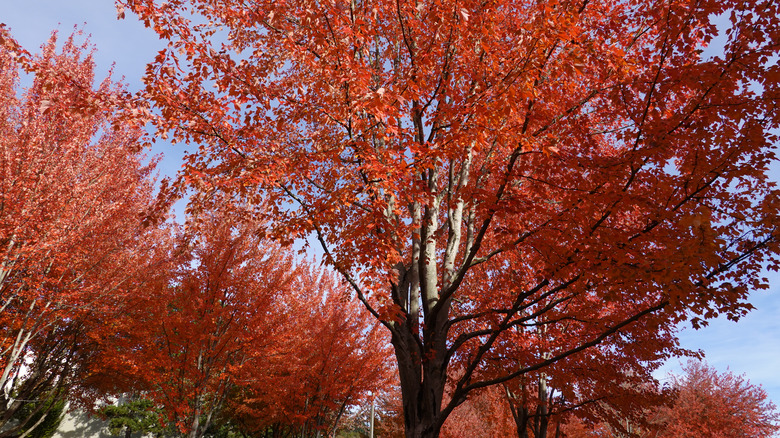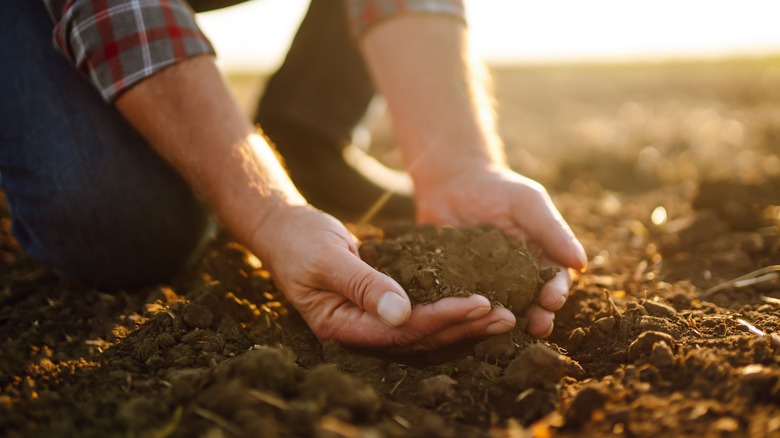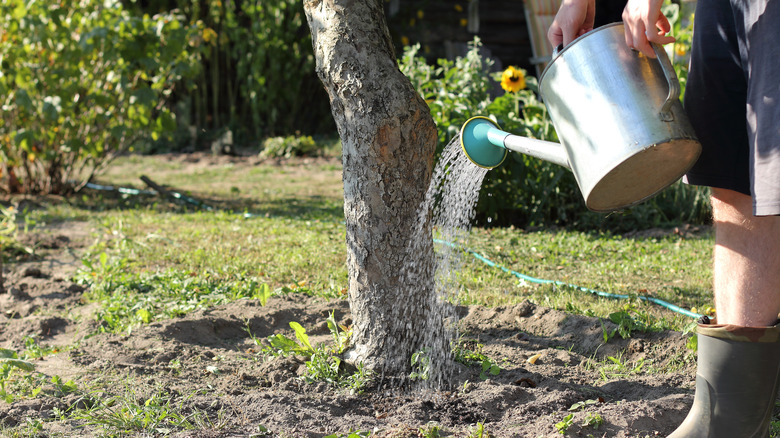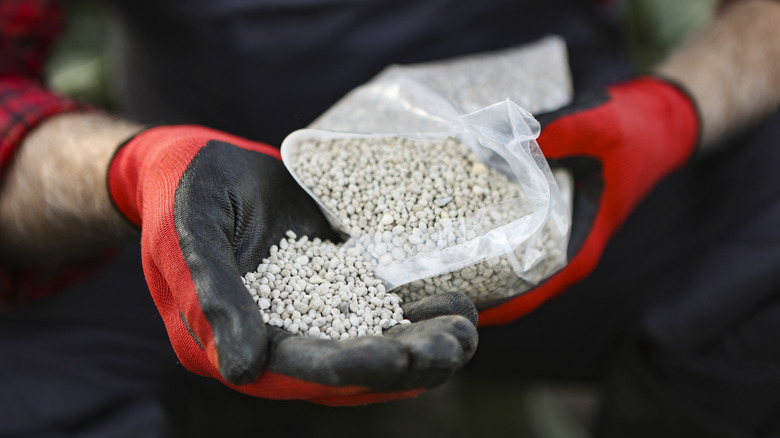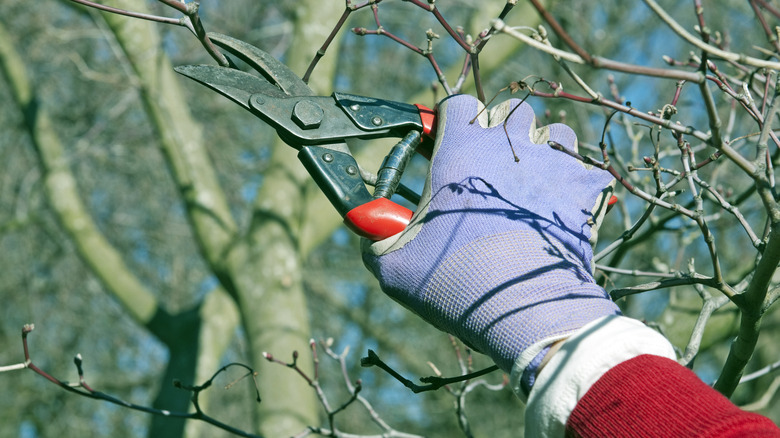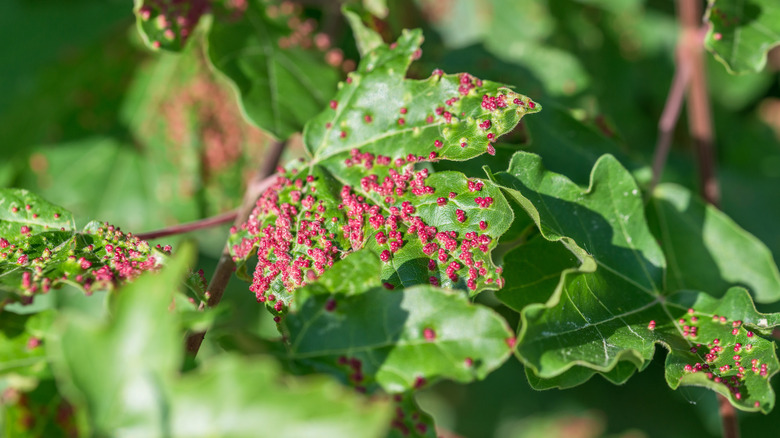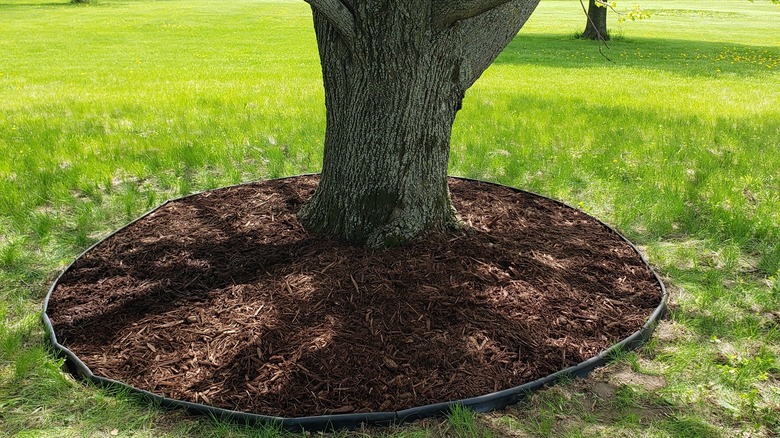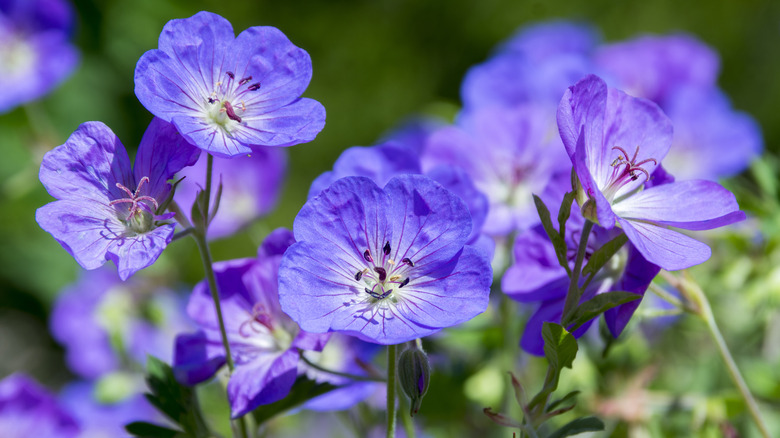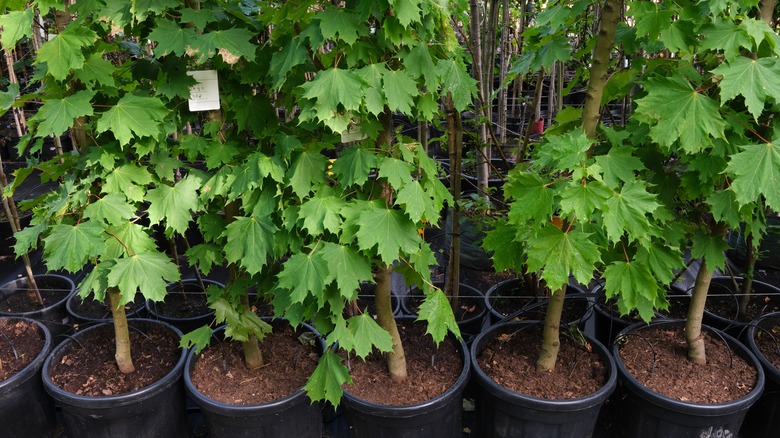How To Successfully Grow An Autumn Blaze Maple Tree For Its Beauty & Benefits
We may receive a commission on purchases made from links.
Are you searching for the fastest-growing tree for a yard that needs shade ASAP? The Autumn Blaze Maple tree (Acer x freemanii 'Jeffersred') could be the perfect solution. This popular hybrid results from crossing a silver maple with a red maple. It can grow as much as 5 feet in just one year, reaching a height of 50 feet by maturity. The Autumn Blaze Maple has an attractive rounded crown, and the tree's vibrant orange-red color stuns onlookers. In addition to its reputation for dazzling fall colors, the tree provides multiple benefits to humans and wildlife in the surrounding area.
The Autumn Blaze Maple features edible fruit that will draw birds to a property, providing them with a delicious meal. Wildlife also uses the tree for shelter, and many animals enjoy the sap that it produces. Another benefit to choosing an Autumn Blaze Maple is its ability to withstand air pollution and clear harmful toxins from the air. Successfully growing an Autumn Blaze Maple tree for its beauty and benefits requires following several essential steps. However, with proper care, you can expect to enjoy your Autumn Blaze Maple for 60 years — quite the return on your investment.
Choosing the correct location and checking the soil
The Autumn Blaze Maple grows best in the U.S. Department of Agriculture plant hardiness zones 3 through 8. Once you've determined that the tree will flourish in your area, you'll need to choose the right planting location. Since this maple has quite shallow roots, they often erupt above the ground as they mature. When considering where to place the tree for shade, you must plant it a distance from any structures or garden beds so the roots don't cause a problem.
In addition to identifying the correct location, you'll need to confirm that the soil in the preferred spot meets the maple's needs. Autumn Blaze Maples thrive in well-draining soils, such as sand or loam, although you can grow them in clay soils that you have amended to drain better. The trees do best with acidic and neutral soils, so you'll want to test your soil pH before planting. You can amend the pH using peat moss, sulfur, or composted wood chips if it turns out to be alkaline.
Providing proper sun exposure and meeting watering needs
Proper sun exposure is crucial to the health of Autumn Blaze Maples. The trees love full sun or partial shade, so you'll need to ensure they receive direct sunlight for at least 2 hours each day, although 6 hours and upward is better. Trim any nearby trees hindering the sun from reaching the prized maples.
Although the Autumn Blaze Maple can handle slightly dry soil on occasion, you'll want to follow the recommended watering requirements to experience the tree's lively-colored leaves at their finest. When you first set the tree in the ground, you'll need to give it extra moisture, so water deep into the soil surrounding the maple. For the next year, you should water it once or twice a week, depending on how much rainfall the tree has the opportunity to drink up. Once the Autumn Blaze Maple has become fully established, you will only need to water it when the soil starts to feel a bit dry. Warning: Avoid over-watering the tree at any point, as this makes it susceptible to root rot.
Fertilizing Autumn Blaze Maple at the right time
Giving your Autumn Blaze Maple a little extra nutrient boost each spring can help it thrive and provide shade and beauty. Accomplish this easily by applying a balanced slow-release fertilizer listed for use with maple trees. Amazon sells Miracle-Gro Shake 'N Feed for flowering trees and shrubs that would work well for this purpose. It uses all-natural ingredients and slowly releases the fertilizer over three months.
To apply a balanced slow-release fertilizer, carefully follow the instructions on the fertilizer's product label. Typically, this involves shaking the fertilizer directly over the soil surrounding the tree. Stick to the tree's drip line, and don't let the fertilizer touch the trunk. Use the diameter of the drip line to determine how much to apply; however, you'll want to ensure that you create a nice and even layer of fertilizer. Once you've applied the fertilizer, immediately water over it so it can begin to take effect. Note: It's best to skip the fertilizer the first year after planting. Begin employing this strategy in year two and continue as long as the tree lives.
Pruning the tree for beauty and health
Autumn Blaze Maple trees have the tendency to become top-heavy. The dense canopy can also affect the tree's shape and the amount of air that circulates around the branches and foliage — one of the most significant drawbacks of the Autumn Blaze Maple. You'll need to employ proper pruning techniques for the tree to remain structurally sound, healthy, and beautiful.
Once the tree has entered a state of dormancy, you can begin the pruning process. Ensure you have sterilized all your pruning tools before jumping in to avoid spreading disease. Start by cutting away all of the dead or dying branches. Remove any branch that crosses over another, as this contributes to overcrowding and reduced airflow. As you prune, avoid cutting the larger branches that measure 3 inches in diameter or more. Finish by thinning out any areas that remain crowded. After that, you can move on to the base of the tree. Look for and prune away any suckers. Suckers steal energy and nutrients from the tree's limbs, so it's always best to get rid of them if they turn up.
Installing support cables for young trees
Young Autumn Blaze Maple trees have weaker branches that can break during a powerful storm. Additionally, snow can collect on top of the branches, and the branches will crack if it gets too heavy. It's best to install dynamic tree support cable systems until the trees become more established and better able to handle big gusts of wind, heavy rains, and winter blizzards. This cable system offers support while allowing the trees to move as they usually would.
TreeStuff sells a high-quality bracing system that you can install yourself if you have budget constraints. The price ranges between $100 and $270, depending on your desired size. The included ropes and sleeve are designed so that they won't cause any damage to your maple. Reviewers describe the system as easy to install and requiring minimal tools. Still, you always have the option to call a professional to ensure the system gets installed correctly, potentially saving you money in the long run.
Watching for pests and diseases
Unfortunately, Autumn Blaze maples are not immune to pests and disease, both of which can have a devastating impact on your tree. You'll need to watch out for these issues and address them immediately to keep your tree healthy and looking its best. Regarding pests, the maple attracts leafhoppers, aphids, beetles, and spider mites. In addition to the damage these insects cause, the tree becomes susceptible to rot because of them.
Once you spot the insects or the havoc they wreak, begin treatment with an insecticide right away. The best type of insecticide for a tree is a systemic insecticide, as you can apply it to the base. You don't need to climb a ladder or risk your safety by spraying the outside of the tree, which isn't effective against boring insects anyway. The systemic insecticide will work from the inside out, killing all the pests known to frequent Autumn Blaze Maples without harming beneficial pollinators. Apply the insecticide each spring following the instructions on the product label.
Overwintering for protection against the cold
Once winter is on the horizon, you'll want to complete a few actions to prepare your Autumn Blaze Maple for dormancy. Taking the time each fall to get your tree ready for colder temperatures is just as important as feeding and caring for the maple during the growing season. The result is a more resilient and vibrant tree that adds beauty to your property and shelters birds and wildlife in the area for longer.
During the fall season, stop watering the Autumn Blaze Maple and avoid using any type of fertilizer. Take this opportunity to prune the tree, as stated above. After you've completed this step, you can move on to applying a layer of mulch. Shredded wood or bark makes an excellent mulch for maple trees. Begin applying it approximately 3 inches from the base of the trunk. You never want the mulch to touch the trunk. Extend the mulch at least 6 feet out or as far as the drip line, keeping it 2 to 3 inches thick.
Companion planting for added benefits
Companion planting allows two plants with similar growing requirements to benefit from each other, making it a great practice to employ whenever possible. For example, one plant may provide shade, while the other doubles as an insect repellent. Many plants work well as companions for Autumn Blaze Maples, allowing you to tailor your garden's appearance to your preferences.
Consider adding a Rozanne geranium next to your Autumn Blaze Maple. It produces beautiful violet-blue flowers and acts as a natural mulch. Gardeners often use the plant as a decorative border around trees. You can also plant coral bells to add color while attracting pollinators such as bees and butterflies. You could even go with weigela, which produces red, blue, or purple tubular flowers that look quite fetching around an Autumn Blaze Maple. The plant acts as a soil buffer and also draws in important pollinators. A few other companion plants to choose from include daylilies, hostas, potentilla, and spirea.
Propagating to produce new Autumn Blaze Maples
If you love your Autumn Blaze Maple, you may wish to add a few more trees to your landscape. However, you don't need to purchase another starter, as you can easily propagate the tree yourself. It also grows quickly, so it won't take too long to transform into another showstopper in your yard. Since this tree doesn't produce seeds, you must propagate it using cuttings.
Locate a branch on your Autumn Blaze Maple with new growth and cut a 4-inch piece off the tip. Make sure you sterilize your pruning shears before taking this step. Prepare the cutting for planting by stripping away the leaves and the bark from the lower half of the branch. Dip the end in rooting hormone and then plant the cutting in a pot with moist potting soil. Cover the pot with a plastic bag to create a greenhouse effect. Wait for the cutting to take root before removing the bag and setting it where it can receive direct sunlight. Before transplanting the cutting in your yard, you'll need to give it a few days to acclimate to the great outdoors.

